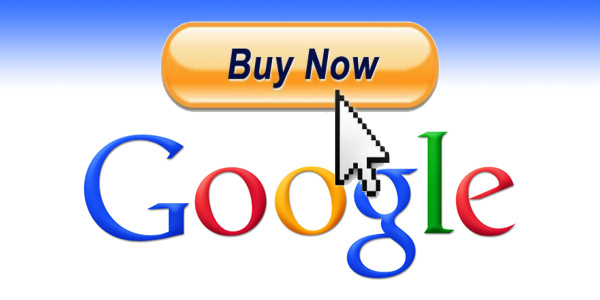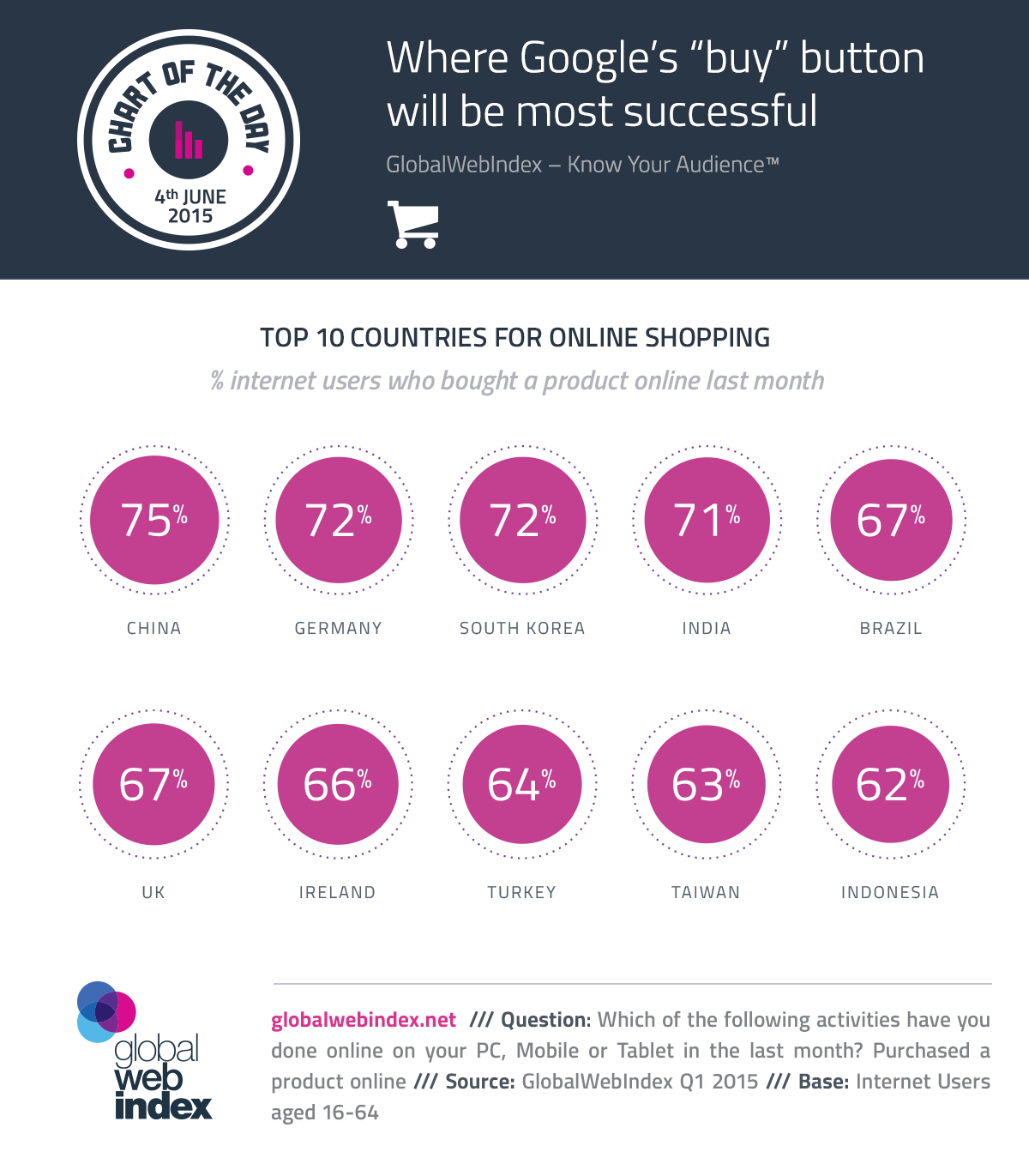Google has been on the forefront of eCommerce technology on the internet. Google shopping has now hundreds of products encompassing in several countries. It’s a natural progression for Google to announce ‘Purchases on Google’, a new feature where consumers will see a “buy” button in some promoted mobile search results.
Key Features of the Google’s Buy Button:
- The Google buy button will accompany sponsored or paid search results, shown under a “Shop on Google” heading at the top of the page.
- When shoppers click on this button, they will be taken to another Google product page to complete the purchase. This will make it easier for consumers to purchase products directly from mobile search ads.
- This feature will decrease the time taken by consumers while shopping online.
- It will increase the sales of eCommerce marketplaces immensely as purchasing through mobiles and tablets is swift and quick.
Source: GlobalWebIndex.net
Google is partnering up with some retailers, who will be taking charge of the order fulfillment and customizing Google’s purchase page with their own logo and familiar branding. Consumers can also search for other items within these retailer sections. Google’s focus in recent times has been more on making purchasing easier and removing unnecessary touch points.
Impact on E-commerce:
E-commerce is all about purchasing and selling of goods and services online via electronic channels, primarily the Internet. So, there will be huge impact of Google buy button on eCommerce:
- The Google buy button will enable mobile searchers to search, and buy directly through Google without having to pull out a credit card, since Google will store card details after the first purchase to make the process seamless.
- Liz Gannes of Re/code reports that “Kordestani (Google’s chief business officer) described the product launch as a way to remove friction for users so they buy more things online. Some 90% of commerce is still offline.”
Quite a number of ecommerce marketers are not happy with this because they are skeptical, doubting if Google is attempting to finish their brand loyalty and steal their business by becoming a retailer. But there’s nothing to worry about as Jerry Dischler, Google’s vice president of product management has made it sure that ‘everyone knows Google is not trying to become a retailer’.
- Dischler adds, “The buy button is really about mobile and driving mobile transactions. In retail, mobile conversion rates are lower – keyboard input is difficult, sessions are shorter, you don’t always have payment credentials available.”
Dischler has made it evident that the intentions of Google is to help, not hurt, e-commerce businesses by aiming on the 5% of the time that actually counts while people are making decisions to buy, and make that really great.
What should an e-commerce marketer do to prepare for the coming of Google buy button?
Ensure You Have a Solid PPC Mobile Strategy in Place:
- According to the Wall Street Journal, ‘initially buy buttons are exclusively for mobile searchers or paid search ads. They are not for organic listings’. This ought to be noted.
- With their up-to-date shopping ads, ecommerce marketers should already be all over their paid search game, but now the concentration on the mobile searcher needs to drastically heighten.
- After “Purchases on Google” is provided to all retail advertisers, the chances to increase conversions will be noteworthy and game-changing for many e-commerce businesses.
Keeping Past Purchasers Engaged with Your Brand:
One vital formula for the success of many e-commerce sites is obtaining return customers and brand ambassadors, but with the ability to buy directly from Google, constructing customer loyalty is going to become increasingly hard for e-commerce marketers.
- BCC News reports “Google’s move may cause concern from retailers who are keen to maintain a close relationship with customers”.
- “The product pages where Google handles the purchases will be heavily branded for the retailers selling the items, and any recommendations for other things to buy will be from the merchant,” reports the WSJ, which may ease the stress of retail marketers’ over losing branding control.
- One more way to make sure your customers purchase from you apart from branding Google pages is by remarketing associated offerings they are likely to purchase.
- They should be tagged after their purchase is done, and you should have a proper stratagem wit to reinforce the hopefully positive experience they had buying with you.
- The WSJ also confirmed that Google will allow consumers to sign up for the same marketing programs they would have been exposed to through an e-commerce site.
- Re/code’s Joshua Del Ray says, “While mobile commerce grew more than three times as quickly as commerce on desktop websites in the first quarter, the percentage of people who go on to buy something after clicking an ad is lower on phones than on desktops. But if you let someone buy a product directly from the ad on Twitter, Facebook, Pinterest or Google – through, say, a Buy button – the thinking is that conversion rate will improve. And when conversion rates improve, advertisers buy more ads. For now, it is working with e-commerce companies Demandware and Shopify to help sign up brands and small businesses they work with, but this approach only goes so far.”
E-commerce marketers ought to be ready with Google’s buy button as the amalgamations of the buy button for e-commerce sites will not only be highly advantageous but will also influence their opportunities for growth. “Soon enough, there will be a ‘buy’ button everywhere you look. Good luck silencing the urge to impulse shopping,” says Mashable’s Seth Fiegerman. If many retailers take part, Google has the potential to become the world’s largest online product catalog with almost knowledge of every product’s price and availability everywhere!
Deepak Wadhwani has over 20 years experience in software/wireless technologies. He has worked with Fortune 500 companies including Intuit, ESRI, Qualcomm, Sprint, Verizon, Vodafone, Nortel, Microsoft and Oracle in over 60 countries. Deepak has worked on Internet marketing projects in San Diego, Los Angeles, Orange Country, Denver, Nashville, Kansas City, New York, San Francisco and Huntsville. Deepak has been a founder of technology Startups for one of the first Cityguides, yellow pages online and web based enterprise solutions. He is an internet marketing and technology expert & co-founder for a San Diego Internet marketing company.





